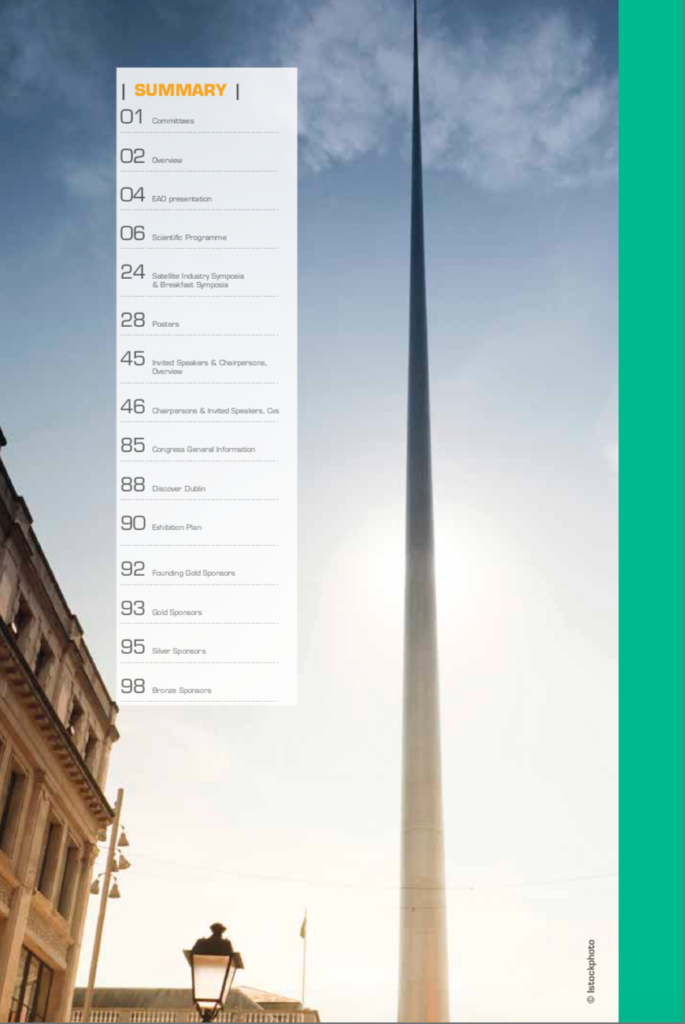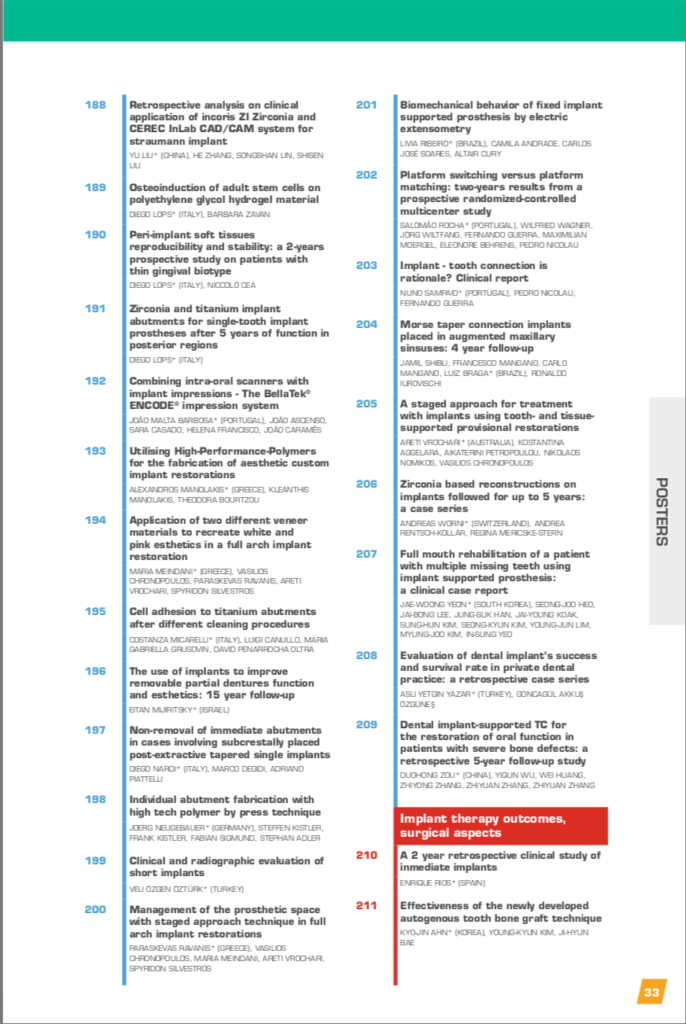Date of congress
Dublin, Ireland, 10. 2013
Organizer: EAO European Association for Osseointegration
Authors
Alexandros Manolakis, DDS, Dr. Med. Dent.
Kleanthis Manolakis, DDS, Dr. Med. Dent.
Theodora Bourtzou, DDS
Introduction
Implant restorations in the aesthetic zone are associated with high aesthetic expectations. So far materials of choice have been zirconia- abutments and pressed or layered ceramics, either directly on zirconia or as a full-ceramic crown cemented on a titanium abutment. These techniques are technically very elaborate and require high-cost equipment.
Aim
The aim of this presentation is to restore a missing maxillary central incisor with a screw-retained implant supported restoration. A novel polymer material for the abutment-crown fabrication of high aesthetic standards was utilized.
Material and Methods
The right maxillary central incisor (# 11) of a 27 year-old female patient was lost due to an accident. Subsequent to bone augmentation an implant was placed. After healing time of 7 months and provisionalization period of 2 months an impression was taken for fabrication of the final restoration. An individual abutment was waxed-up on a titanium base. The abutment was pressed utilizing white high-performance-polymer BioHPP (Bredent, Senden, Germany) directly on the titanium base using the For-2-Press vacuum pressing system (Bredent). In this way it was not necessary to cement the abutment-crown unity onto the prefabricated titanium base, thus eliminating any micro gap or poor fitting. Veneering material of choice was a prefabricated Novo.lign composite veneer (Bredent) luted onto the abutment with Combo.lign luting composite (Bredent) and customized with Crea.lign composite material (Bredent).
Results
The final restoration demonstrated high aesthetic appearance and a natural emergence profile.
Conclusion
High-performance-polymer BioHPP could be a valid alternative to ceramic materials for the fabrication of dental implant supported restorations, thus allowing dental technicians to manufacture highly aesthetic restorations with greater ease and reduced costs compared to all-ceramic alternatives. The technique of directly pressing BioHPP on a titanium base for fabrication of an abutment crown leads to better finish of the restoration along the margin, which is usually 1mm above implant collar. This is beneficial for the soſt tissue around the implant. Further research should investigate mechanical and biological properties of the new material and long-term survival in clinical use.








